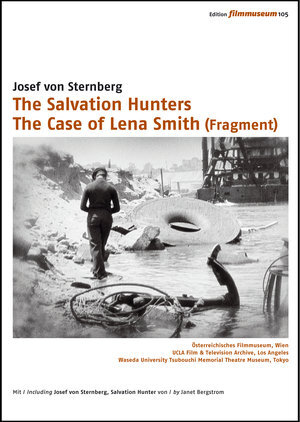GME PRESENTS CUTTING-EDGE NARRATIVES BY JOSEF VON STERNBERG AND APICHATPONG WEERASETHAKUL, NOW AVAILABLE AS DIGITAL SITE LICENSES
/The Vienna Filmmuseum (Austria), founded in 1964 by pre-eminent experimental filmmaker Peter Kubelka and his compatriot, scholar Peter Konlecher, has been dedicated to collecting moving image works that represent the art historical development of the medium, including a special emphasis on the international heritage of independent, avant-garde and non-industrial film. In addition to strong collections of films of revolutionary Soviet Cinema (especially Dziga Vertov) and the American New Narrative filmmaker James Benning, the archive contains key avant-garde works ranging from the silent era to postmodern films from Asia. GME Streamline is therefore pleased to present two cutting edge films by moviemakers working 75 years and continents apart: THE SALVATION HUNTERS (1925) by Josef von Sternberg and MYSTERIOUS OBJECT AT NOON (2000) by Apichatpong Weerasethakul. GME is pleased to offer these two works as Digital Site Licenses via DVD/DSL bundle packages, which we now make available exclusively to our university clientele in North America.
Described both as the first truly independent American feature film made outside the studio system, as well as the first feature-length avant-garde movie, Josef von Sternberg’s THE SALVATION HUNTERS (1925) – his debut film – was produced on a shoestring budget by the actor George K. Arthur. It was filmed in and around San Pedro, California. Sternberg was the auteur on this film, who was responsible for the direction, writing, art direction, and editing. Chaplin’s support for the film got it distributed through United Artists.
Sternberg spun the necessity of a low budget into a virtue: the film faithfully captures the grit of the “lower depths” milieu in its story of an impoverished young woman striving to make a better life with her naïve boyfriend, despite being surrounded by men who would exploit her. The film reveals that Sternberg, under the influence of Stroheim, rejected the sentimental melodrama of D.W. Griffith in favor of an almost raw naturalism, fascinated with corruption and abasement while also exploring the poetically charged and evocatively contrasting mise-en-scene. Sternberg transformed the nether realms of human experience into worlds of picturesque poetry, where décor stands in for society, costume is character, and emotions are phenomena of pattern and light. Bonus features on this DVD include the only existing fragment of von Sternberg’s THE CASE OF LENA SMITH (1929), as well as a video essay by film scholar Janet Bergstrom about THE SALVATION HUNTERS.
◊
With his debut feature, MYSTERIOUS OBJECT AT NOON (2000), acclaimed Thai filmmaker Apichatpong Weerasethakul expertly blends cinematic fact and fiction in a manner that continues to defy both easy categorization and comparison. A low-fi "genre bender," independently produced on a shoestring budget and subsequently endangered by neglect, this film has now been painstakingly restored by the Austrian Film Museum and the Film Foundation from the best surviving elements. This DVD edition also includes 3 short films by the director, THIRDWORLD (1997), WORLDLY DESIRES (2005) and MONSOON (2011).
Shot in fits and starts on a minuscule budget, MYSTERIOUS OBJECT AT NOON was modeled on the Exquisite Corpse (add-an-element structure which was made famous from French surrealism), in which drawings or texts are passed from person to person to elaborate upon, with the original materials hidden so that each addition does not adhere in any logical or predetermined way, resulting in a collective, randomly assembled piece. In MYSTERIOUS OBJECT AT NOON, Weerasethakul travels with a film crew across Thailand and interviews ordinary citizens so as to add their own words to an evolving story about a boy and his teacher.
According to critic and programmer James Quant, “with its source in Thai popular culture and American documentary and experimental cinema, [it is a] perplexing, and exhilarating conflation of genre (fairy tale, road movie, documentary, horror, science fiction, folk anthropology, musical) and tone (by turn sad, surreal, exuberant, teasing, harsh). Its style manages to be both ramshackle and concatenated: the film’s structure is linear and convoluted at the same time, its title a telling convergence of the unknowable (mysterious object) and the temporally exact (noon). If the precision of the latter turns out to be misleading – time in the film is largely unfixed, in flux, employing historical anachronism and refusing to mark either diurnal specifics or the three-year span it took to make the film – it’s modus, as is often the case in Apichatpong’s subsequent work, depends on surprise and unreliability, a knowing errancy not only of narrative progression and coherency but also of such formal constituents as sound source and signature, succession of shots, and identification of setting and performer.”







